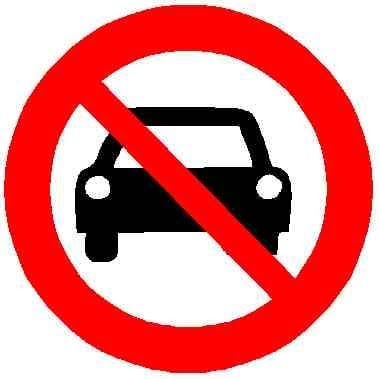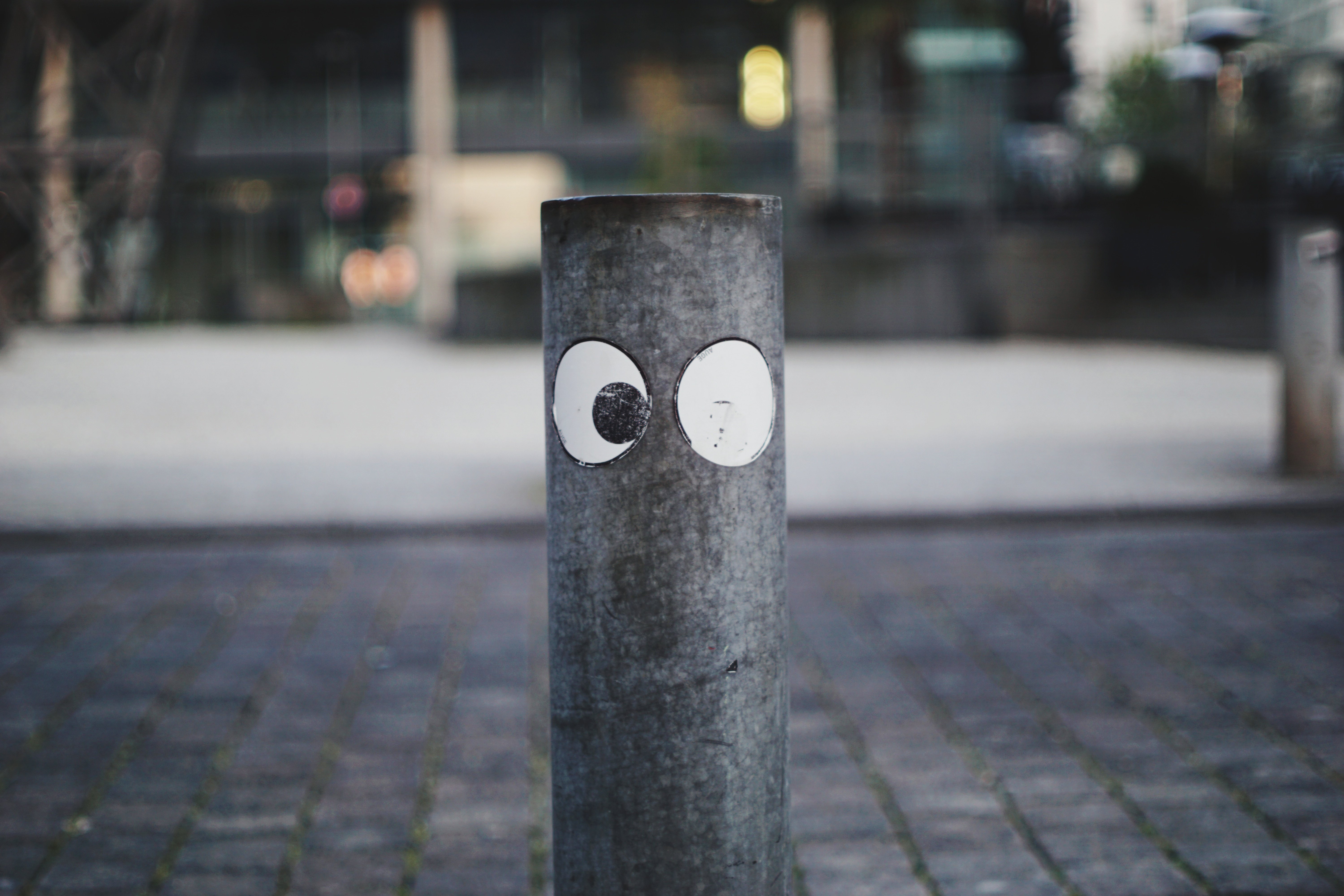They used to be. And then people decided carriages were more convenient than walking. And then people decided cars were more convenient than carriages.
People didn’t really decide, an upper class was able to afford automobiles, they hit tons of people in the streets, they worked together with politicians and automakers to push to make streets for the cars for safety, and invented the term jaywalking. The people who owned cars decided streets belonged to them and through mass production and suburban development, they have become completely normalized.
This legitimately makes it safer for them to coexist, this isn’t some bad thing the lawmakers did just because they had cars. Whether or not you agree with still having cars doesn’t change that that was a good thing.
At the time, many places were considering outright banning cars or at least requiring speed limiters in all cars (to limit to like 25 mph). Car companies knew this would hurt sales, so they started a PR campaign to victim blame pedestrians for pedestrian fatalities. I personally think universal speed limiters set to a quite low speed along with far fewer cars would be far better for safety than modern “rules of the road” + car domination.
The turning point came in 1923, says Norton, when 42,000 Cincinnati residents signed a petition for a ballot initiative that would require all cars to have a governor limiting them to 25 miles per hour. Local auto dealers were terrified, and sprang into action, sending letters to every car owner in the city and taking out advertisements against the measure.
…
Even while passing these laws, however, auto industry groups faced a problem: In Kansas City and elsewhere, no one had followed the rules, and they were rarely enforced by police or judges. To solve it, the industry took up several strategies.
One was an attempt to shape news coverage of car accidents. The National Automobile Chamber of Commerce, an industry group, established a free wire service for newspapers: Reporters could send in the basic details of a traffic accident and would get in return a complete article to print the next day. These articles, printed widely, shifted the blame for accidents to pedestrians — signaling that following these new laws was important.
Similarly, AAA began sponsoring school safety campaigns and poster contests, crafted around the importance of staying out of the street. Some of the campaigns also ridiculed kids who didn’t follow the rules — in 1925, for instance, hundreds of Detroit school children watched the “trial” of a 12-year-old who’d crossed a street unsafely, and, as Norton writes, a jury of his peers sentenced him to clean chalkboards for a week.
This was also part of the final strategy: shame. In getting pedestrians to follow traffic laws, “the ridicule of their fellow citizens is far more effective than any other means which might be adopted,” said E.B. Lefferts, the head of the Automobile Club of Southern California in the 1920s. Norton likens the resulting campaign to the anti-drug messaging of the '80s and '90s, in which drug use was portrayed as not only dangerous but stupid.
Auto campaigners lobbied police to publicly shame transgressors by whistling or shouting at them — and even carrying women back to the sidewalk — instead of quietly reprimanding or fining them. They staged safety campaigns in which actors dressed in 19th-century garb, or as clowns, were hired to cross the street illegally, signifying that the practice was outdated and foolish. In a 1924 New York safety campaign, a clown was marched in front of a slow-moving Model T and rammed repeatedly.
This strategy also explains the name that was given to crossing illegally on foot: jaywalking. During this era, the word “jay” meant something like “rube” or “hick” — a person from the sticks, who didn’t know how to behave in a city. So pro-auto groups promoted use of the word “jay walker” as someone who didn’t know how to walk in a city, threatening public safety.
At one point, cars had to be preceded by a guy waving a red flag. I believe it was a great solution.
North american street and road design are not great at preventing automobile accidents due to their wide designs, high speed limits, and poor road hierarchy uses. The roads are especially unsafe for anyone outside of a car like pedestrians and cyclists. If this was truly done for safety there would be more traffic calming, safer pedestrian crossing and protected bike lanes. Cars are the most subsidized method of transit in North America and the roads/streets are designed to move as many cars as fast as possible.
Lawmakers also sat idly by while big auto corporations bought street car companies, ripped out the street cars, replaced them with buses, and eventually cancelled the bus services as they were now stuck in the traffic created by destroying the street cars and promoting more people to drive. Lawmakers also decided that dense downtown areas should be destroying their buildings to meet parking minimums that were based on very little real data. Sure lawmakers didn’t force you to buy a car, but they certainly contributed to the erosion of walkability and transit as well as promoted car centric design (suburbs, strip malls, parking minimums).
Not disagreeing with the person above me here in the reply chain but wanted to tack onto the conversation that all of the following is historically true:
A) the lack of separation of means of travel has caused traffic issues for everyone involved as long as there have been more than one mode of travel (and those modes of travel weren’t separated)
B) most people (but especially urban Americans) were opposed to cars and saw them as a blight on their city. The city was for the people, the road was for the people. This mentality is reflected in many many news articles which interviewed everyone from the average worker, to cops, to mayors.
C) that the car industry learned how to lobby against the American political system to take advantage of zoning laws and implement stricter guidelines for car centric designs such are minimum parking requirements.
Each of these things played a part in what American car infrastructure looks like today. People hated being afraid of cars, so local government was trying to separate cars from people. The car industry wanted the automobile to be the only form of transportation so it pressured the federal and state governments into passing laws which would result in this happening.
Wanted to highlight this because I feel like a lot of people think it was caused by one thing (namely GM), but life and history aren’t that simple. It was a multitude of factors all overlapping with one another that were amplified by the lobbyists actions.
I think big oil and gas pulled a few strings as well. Making people rely on cars also meant making them rely on gas.
Unfortnately cities were in a sense sold out to these companies with promises of prosperity brought by the automobile but instead recieved crippling debt trying to support the automobiles and their roadways.
Whether or not it’s a good thing is totally a fair point for discussion. Sidewalks and dedicated driving lanes were not the only possible solution.
And then people demanded lots of paved raceways for their cars, which filled up, and made things dangerous for everybody, and worthwhile places far apart, and most of the drivers angry and miserable. Now, the world is on fire, mental health and social cohesion has gone to shit, and all those paved raceways are falling apart because nobody can afford to fix them.
But, yeah, the first part of that story is cute.
That sounds like an exaggeration.
Aye, it does sound that way until you start digging into it. The traffic congestion, the road rage, and the rising rate of traffic fatalities are just obvious.
Think about it more, and work-from-home is still a big fight after the pandemic because people hate commuting. It’s pretty obvious when looking around out on the road; driving does not make drivers happy on the whole. The world is literally on fire; we had weeks of air-quality alerts around here because of record-breaking Canadian wildfires. Driving everywhere cuts off interactions with other people, the “weak ties” in a community that we now know are essential to countering the loneliness epidemic. In fact, the opioid epidemic is related, because opioids simulate the same brain receptors as social connectedness. And, of course, American infrastructure consistently gets failing grades because we don’t maintain it. We would, but state and municipal budgets are straining under the burden.
I’m short, there’s tons of justification to “fuck cars”, if you look. There’s lots more than what I’ve mentioned here.
I wonder, were population centers large enough to be considered “busy” before domesticated horses and carriages were around?
At the peak of the Roman empire, the city of Rome had at least one million inhabitants, a total not equaled again in Europe until the 19th century.
From https://en.m.wikipedia.org/wiki/Demography_of_the_Roman_Empire
At the peak of the Roman empire, the city of Rome had at least one million inhabitants, a total not equaled again in Europe until the 19th century.
From https://en.m.wikipedia.org/wiki/Demography_of_the_Roman_Empire
That number is usually considered to be way too high fwiw. At 1,000,000, it would have a population density of over 72,000 per square kilometer. Manila is the densest city in the world today at about 43,000 per square kilometer.
It’s even less likely when you consider they didn’t have any sort of high rises and a third of the city was dedicated to parks and public buildings.
Fuck cobblestone.
This comment was written by the bicycle gang.
It also sucks for those of us with bad ankles and knees. Almost as bad as sand. All I see on those pictures is pain.
They are also extremely slippery when wet or frozen. So add a lawsuit to the pain as well.
Yeah, looking at one of those is making my ankle hurt.
I’m wondering if they feel as horrible on a fully suspended bike. I’m also commenting something just because.
They maybe feel less horrible, but the vibration screws up your bike.
There are workarounds to get cobblestone streets to work. In Groningen, Netherlands, I’ve seen cozy cobblestone streets which had a 50cm (1½ feet?) wide and very even brick strip in the center for bicycles. Looks and works great and it is an easy retrofit for historic cobblestone.
So, is the community against all cars? Or just the ones for cities? I went to LA last month to see my brother and we went to this nice area that had blocked the street off permanently and all the restaurants and businesses had taken over the road. I. Fucking. Loved. It. All the extra space was great. So in city life, I completely get it.
That being said… I am a car person. I have an MR2 turbo I love to death. I have a lifted F250 (I grew up on a farm in a small shithole town in SC. I know I’m considered bad here but eh, the Kia Sorento isn’t going to pull the dump trailer or the tractor and the lift is because I’m 8 at heart and still smile driving it around) and a heavily modified Jeep Cherokee I play off-road with. Plus my daily Honda Civic. Cars have souls and driving is a sense of freedom I am addicted to. I can promise you 100% of “grown ups” (age is subjective here) with loud cars isn’t to impress anyone else, it’s for us. I won’t even drive my MR2 at certain times to make sure I don’t disturb anyone and when I’m around a populated area, I shift at low RPM and keep the noise down a lot, but away from everyone in bum fuck rural America, that exhaust note is all for me.
I get you hate cars, I even agree for the most part. But does that mean ALL cars? Am I bad here?
Personal vehicles have a place, and a lot of people really enjoy the hobby of it. But at least what I’m against is how they’ve completely and utterly, fully enveloped our modern Life, paving over the places we have to live in the process. The auto industry has made people addicted to the concept that every place has to be accessable and beholdent to the automobile, making it inaccessible and very unpleasant for anyone who doesn’t buy into that system (pedestrians, disabled people, cyclists etc). It’s honestly a violation of personal freedom that many people can not perform their day-to-day basic functions of socializing, gathering food and working without paying into the micro transactional hell that of the Auto/Oil industry.
Being able to go somewhere and visit worry people without dribble feeding that piggy industry with my hard earned money into gas/electricity is freeing and should be the default. If someone wants to blast down a country road listening to the purr of the engine, power to them. Forcing everyone through deliberately exclusionary infrastructural planning to pilot a few Tons of metal plastic and combustion engines just to perform basic tasks? Fuck off.
(Edit: my bad language is not directed at you, but at the industry, you sound chill)
Nah man, I completely get it. Like I said above, I live in a rural shithole in SC and transportation is like 1/4rd or more of a lot of people’s income. Its easy to say “JuSt bUy SoMeThInG oLdER, yOU DoNt NeEd AnyTHiNg NiCe” but Im a technician at heart and full understand the depth of knowledge you need to properly maintain and repair an old car. If you are super duper lucky, you’ll have an uncle or brother to help you but most people are at the mercy of the shops around them and I personally have been F’d in the A because of ignorance or compliance and I know in some rather silly and not on purpose detail how a vehicle works. Public transportation doesn’t seem to be a possibility in our neck of the woods but doesn’t mean being a slave to car manufacturers is the only solution. I love the freedom, I even drive for a living now and still love it, but I’m not foolish enough to think I am not the outlier.
Biggest thing this community is against is car dependency. Cities should not be designed around cars as default, to the exclusion of everything and everyone else. It actually benefits car people, as I’m pretty sure you don’t want people like me – someone who sucks at and hates driving – clogging up the roads.
There’s this observation – the Downs-Thomson Paradox – that notes that the main thing reduces average traffic is not building more car infrastructure; it’s making better and faster alternatives to cars. When things are built more densely and walkable, when public transit is fast and convenient, you see traffic drop precipitously, as most people just want the fastest, most convenient option for getting places.
That said, I think most in this community don’t really like cars clogging up city streets, due to the simple fact that they are loud, dangerous, and polluting. My ideal city would have park-and-ride at the city limits, then electric microcars (more like glorified golf carts) in the city for those use cases that still need cars, like first responders, physically handicapped people who can’t walk/bike, etc. Rural areas would obviously still need cars, but even they could probably benefit from having better transit access.
Personally, I and most people in this community don’t view you as the enemy so long as you’re not an asshole driver. We view the systemic disinvestment in public transit and car-centric urban design as the primary enemies. After all, how can one blame someone who is just trying to live their life in a broken system? Hate the game, not the player!
Cars are tools. Like all tools, they still have a niche where they are the best option. But cities and urban areas are not one of them and using cars in them is an extremely non-ideal use of the tool, like trying to hammer in a screw.
I think the goal is more to break car dependance, and end up in a similar state to places like Amsterdam. In Amsterdam people still have cars, and there’s still a healthy car culture in the Netherlands . You just aren’t required to have a car to live.
My opinion:
Trucks used pragmatically for farming or legit hauling stuff is perfectly fine.
Cars used in true rural areas are also fine, because by definition, they haven’t been developed yet, so there’s pretty much no other way to get there.
But in populated areas (not just “cities” but also suburbs and other areas that are not truly rural and extremely spread out), spaces should be designed for walkability, and have good mass transit options. If a neighborhood is being built, put a small grocery store right next to it, so all those people can get groceries without driving. And put a bus stop near it, so they can get to other areas of town they actually need to go.
Cars aren’t going away entirely. They serve a specific purpose. But they’re overused.
The way I see it is that I love cars and driving but hate car dependency. People who don’t like that shouldn’t be forced to get a car. This leads to less bad drivers due to people merely putting up with driving rather than focusing on it, meaning a safer world for pedestrians, bicyclists, motorcyclists, and other drivers.
In my mind yes, because of environmental concerns.
Me using my 1200 kg econobox to reach destinations that public transport doesn’t give a hoot about is doing absolutely nothing to the planet compared to a rich person’s private jet, or cobalt mining, or manufacturing and shipping all the cheap plastic stuff people buy that they don’t even need from China etc.
I am all for walkable cities, I love my hometown where walking and cycling is not only possible, but infinitely better than driving. Yet I can coexist with cars in the same spaces. But I have so far seen absolutely zero viable arguments against car ownership. It’s a part of our personal freedoms that’s just more lucrative to take away than to fix the systematic problems of the world.
The main issue here? I’m not willing to give up my freedoms, and the rich fucks running this shitshow have no incentive to lower their profits.
This community’s counterpart on reddit started out great, but it quickly transformed into an extremist echo chamber of idealists that are painfully out of touch with the real world.
Am I an environmentalist? You are damn right. I grew up on a farm and in nature. It’s amazing and must be protected at all costs. But, do I think I personally contribute anything worth noting to that? No. If corporations and the ultra wealthy got their shit together, everyone in America could be rolling coal in their diesel pick ups and it wouldn’t matter. THAT DOES NOT MEAN WE SHOULD DO THAT, but I will not feel guilty for contributing a drop to a flood done by the top 0.1%. Me personally, I think the whole carbon footprint thing is great, but it’s pushed on the masses to try and be like “you guys better drive clean cars and recycle!” as their crude oil burning cargo ships and mass growth and slaughter of our fellow creatures on this planet do most of the damage. Everyone should be held accountable, but at what point is someone like me sacrificing something that gives us a little joy in our miserable little lives for at best, at absolutely best a wishful thought? My MR2 and Truck and Jeep make me happy, I won’t feel guilty for enjoying them.
You should separate “I am bad” from “what I do is bad”. I can give reasons why I believe driving around a car because it is fun is a bad thing to do. That doesn’t mean I think or want you to believe that you are bad.
Personally I believe “all” cars are bad. In emergency situations they have value, but ultimately I think it would be better if for personal and public transportation there were no cars at all.
People make fun of the “new towns” planned and built by post-war socialist governments in the UK, but I spent some delivering leaflets in Stevenage recently and it’s honestly heaven for pedestrians.
There are roads for cars, but they all connect to the back of homes. The front of each house leads into a wide pedestrian / cycle path, and the paths connect via tunnels underneath the roads. I would walk hours each day delivering leaflets and never see a car.
That sounds lovely. Usually “post-war” is associated with car-dependent design, but it’s nice to hear about post-war designs are are good, actually.
I think these are used to called “streets”, now roads are streets…
If you want people to abandon cars, make the alternatives better. Unfortunately I never see that happening, I only see attempts to make car travel worse. I hate public transport with a passion, because it is so bad. When I was commuting, it took an hour each way to go 13 miles, but if I tried to take public transport, it would have taken two hours each way, including 2 miles of walking on a state highway with no shoulder and no sidewalks. Would have had to take a bus to the light rail, and change trains at least once. This light rail shared the same road that cars use, so it was subject to all of the same traffic issues that cars suffered.
Designing for cars forces alternatives to become worse by physically shoving apart destinations in order to fit in parking lots and more lanes. Nobody wants to walk when they have to traverse shitty parking lots to get anywhere instead of nice places, after all.
The sort of argument you’re making is fundamentally dishonest because it’s based on the presumption that the status quo development pattern is somehow a level playing field when it is, in fact, very much unfairly catering to cars.
See also: The Arrogance of Space
Due to induced demand and other factors, constricting automobile traffic improves public transit and makes getting around by transit and taking a car better in the long run.
Yes, in the short term it would seem negative (30 minutes by car vs. 2hr becomes 1hr vs. 2hr), but more people using transit would spur investment into transit. This would start with better allocation of bus routes to more directly go to desired destinations. In the medium term it would be making other areas easier to use alternatives such as walking and bike paths along state routes like the one you’d take. In the long term it would make good sense to invest in build commuter rail lines into and out of the city, which would be better funded by fares, private and government investment. All of this would reduce traffic from cars in the city as well, without needing to increase the roadway maintenance budget from having bigger roads.
The other thing is that if the light-rail road became pedestrian only, it would have right-of-way through the entire route and wouldn’t have to wait for the cars. Pedestrians wouldn’t block a moving LRV (or they would at their peril).
The Nottingham tram is actually pretty good at avoiding traffic, having it’s own lanes.
Unfortunately it terminates in the arse end of fucking nowhere, leaving me to walk 3 miles across farmer’s fields and railway sidings if I want to get home.
Unsurprisingly, I don’t use it much.
This light rail shared the same road that cars use, so it was subject to all of the same traffic issues that cars suffered.
so make the cars go somewhere else. make more public transit that comes more often. make sure everything that people need to live is within walking distance (i am not saying to confine people to one area, only to make it possible to live in that one area). make more trains, bike paths. and plaxes you can safely walk.
But- but- how will I show off my deafeningly loud motorcycle to anyone unfortunate enough to walk near a traffic light while I’m stopped if I have to drive around densely populated areas or walk??? /s ~Cherri
so make the cars go somewhere else
Your first suggestion Is what I hate about the car hating crowd. Remove that from your agenda. Make your alternatives better than a car without screwing over the car drivers. You will make more people accept your changes that way. Light rail in San Jose is a disaster, it does not go to useful places, and it gets there slowly. It should have been a subway so it could be independent of surface traffic.
No. Making the cars go somewhere else is the most important thing. It wouldn’t screw over car drivers, because car drivers wouldn’t need cars to get everywhere. If there are fewer cars, then all other traffic is faster. Even if a train only moves at the speed that a car would have moved at, it still moves more people. The same goes for buses and trams. Bicycles and walking will still be slower than it’s possible for cars to be, but since they take up less space, they will be faster in practice. Also, without cars, everyone will be far safer, the air will be far cleaner, and cities will be far quieter. Then, when cars are gone, you won’t need parking lots. The parking lots can be turned into something useful, whether it’s housing, stores, parks, or literally anything that isn’t an asphalt slab.
…so we’re getting sidedrives then?
YES YES YES YES!
I walk in the middle of the road everyday to confuse ans annoy car drivers.
Free the streets!
Walking is slow and you can’t bring stuff with you. Keep the roads, but provide better public transport and tax big pickup trucks and SUVs
Wdym? These streets are driveable, you just have to go slowly and through limited areas
deleted by creator
It’s not, it’s how roadway heirachy is supposed to work. You have slow pedestrian streets which are places you go, and high speed, grade separated roads which connect them along with biking and walking paths. Streets still need car access, but not fast and not as thoroughfares.
What the US has done is merged this into the stroad, which doesn’t work for anyone.
Well, that’s what those “walkable streets” are
Surprise, the world isn’t all glitter and unicorns
Urbanism’s whole point is the relative slowness of walking. Cargo can be escalated through hand, bag, backpack, cart, disassembly, re-acquisition.
you can’t bring stuff with you.
Pockets, bags, carts. You can take even more stuff walking than on public transit.
So everyone should walk everywhere? Not even bikes or scooters?
Amen!
They are in every place that isn’t America, at least in the city centers
Clearly never been to the Arabian Peninsula
Arabian cities are all artificial and opulent, and probably designed in accordance to American standards.
Okay, but its not only American cities. I think part of it is experiencing population growth simultaneously with wealth at the same time as cars being around
Must have missed them the last time I was in Frankfurt.
That looks so pleasant but seems like a nightmare if you have to go long distances to somewhere specific.
Getting groceries would also probably be a pain. You would have to probably get a wagon or something.
Can’t you walk for like 10 minutes to get stuff?
I can, but the 40t truck that delivers the groceries to the store might have problems.
Is the truck supposed to drive down the walkway with the pedestrians? That seems fucking terrible.
I’m in a fairly dense, walkable neighborhood with grocery stores within a 5-minute walk of me. Stopping by a few times a week and carrying the groceries is very feasible. Else, I sometimes go to another grocery store that’s like a 10-minute bike ride away for certain items, and plenty of people just put pannier bags on their bikes for grocery shopping. I also see plenty of people with wagons for groceries in my neighborhood.
I walk about 15-20 minutes 1 way to my grocer about twice a week and much prefer it over driving and buying in bulk. Carrying my grocceries home helps prevent me from over spending and buying junk foods and I end up eating more fresh produce and animal products than processed foods. The walk is also great for my physical and mental health.
Less waste too. You buy only what you need, not what you might need
generally places with high enough population density for streets have grocery stores often enough so you rarely have to walk more than 5-10 mins to get there so you dont have to buy enough food for a week on one go
Yep, when people say that they’re imagining their 3 mile drive commute to the shop being replaced by walking when that’s not all that would change
Exactly. No one’s advocating that walking be a drop-in replacement for all our driving trips. What this community wants is neighborhoods dense and walkable enough that you don’t have to travel 3 miles just to get groceries. Or if you do, there ought to at least be a high-quality bike path and/or public transit to get you there and back. Car-oriented urban design just needlessly spreads things out and needlessly segregates uses. Neighborhoods should be denser and mixed-use.
Walk short distances on quiet, low-stress streets, having chance encounters with friends and neighbors? I can see why people are afraid of this nightmarish hellscape! /s
Seriously, I do sort of understand. Decades of isolation and media brainwashing has made Americans literally terrified of each other. We have a huge loneliness epidemic, and research finds that those sort of loose, community ties are what would best fix it. Yet, we refuse, and cower behind the wheel of our Suburban Assault Vehicles.
Seriously, I do sort of understand. Decades of isolation and media brainwashing has made Americans literally terrified of each other. We have a huge loneliness epidemic, and research finds that those sort of loose, community ties are what would best fix it. Yet, we refuse, and cower behind the wheel of our Suburban Assault Vehicles.
Honestly, I suspect this is a large part of why cities tend to be so socially liberal. When you have to exist in the same space as people of all manner of different skin tones, appearances, lifestyles, religions, etc., you eventually realize that they’re all just normal people wanting to live out their lives, get groceries, get to school/work, etc.
It’s when you’re isolated away from everyone and everyone that paranoia kicks in. When you live in suburbia, your house starts to feel like a fortress that needs to be protected from everyone, and anyone on the street starts to seem a threat. But when you live in a city, the abundance of people on the streets becomes a source of safety – hard to commit crime when there are so many potential witnesses! There’s a reason crime statistically congregates in places like under freeway overpasses and in dark alleyways and other places with few pedestrians – crime doesn’t like witnesses.
Parking lots. Don’t forget parking lots! A large proportion of assaults happen in parking lots because there are no witnesses around to help.
There would still be roads just not everywhere. The roads would connect communities and since these community would be built around walking you would just take public transport.
For convenience, the wagon could be motorized. Perhaps even have a nice, comfy seat or two.
That’s just a fat people scooter
Convenient for whom? Ever hear of the Tragedy of the Commons?
Is that the one about the guy who was so powerful and so wise he could use the Force to influence the midichlorians to create life?
That guy had a motorized wagon?!
I mean, have you seen the rush hour traffic on Coruscant?
If you have to go long distances, in modern countries, you take a train. Groceries are at a walkable distance, you can go 2 or 3 times a week easily, on the way back from work for example. Also tape water is drinkable there so you don’t need to carry heavy luxury plastic wrapped water.
only if you are in bad fitness and adjusted to sitting around and driving all the time
Found the American :)
I have been on roads like that in Asia in urban areas. Basically mopeds are the answer to every “well what if I have to move a lot of stuff or get somewhere fast” question. It isn’t a perfect solution but it is a decent one.
I’ve seen come crazy people on bikes man, surely that can be used
But then you’ve got people on bikes trying to dodge pedestrians.
Oh how nice you can rub it in you can walk great distances without pain, have that sort of time in your day, can afford to live so close to work, assume a bathroom is going to be available or having to carry anything heavy in any of those photos. The world is against those with disabilities and poverty.
Many people can’t drive because of disabilities either, and cars make spaces much less safe for many people with certain disabilities as well. For example, my sister dealt with random spells of vertigo for a while, and thus her driver’s license was suspended as a result. Car dependency made life significantly harder for her once she was no longer able to drive because of it. The one thing that ended up being a lifesaver for her was an e-bike, as it could handle the steep hills in her neighborhood and get her to the nearest grocery store a few miles away. Even with that, her neighborhood still has almost no bike infrastructure, which make biking to the store much more hostile than it should or could be.
Similarly, there are plenty of people who can’t walk or bike very far and can’t safely drive (like elderly people) for whom public transit is a great option – provided we as a society choose to build enough public transit to serve them, of course.
Point is, the only transit system that can serve everyone is a multi-modal one, where there is bicycling, walking, public transit, etc. all layered together.
No one here is against disabled people using small motorized vehicles to go around. You don’t need to carry stuff that doesn’t fit in a backpack 99% of the time. I don’t see how the car solves the bathroom issue, we have public toilets and commerces with toilets here.
Car culture pushes people far from their work with no alternative, that’s what we fight precisely.

















